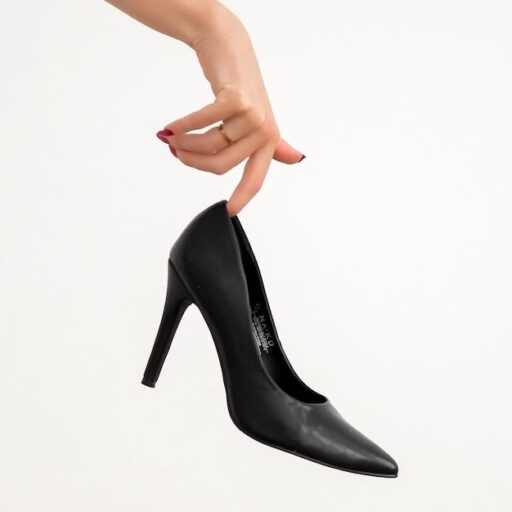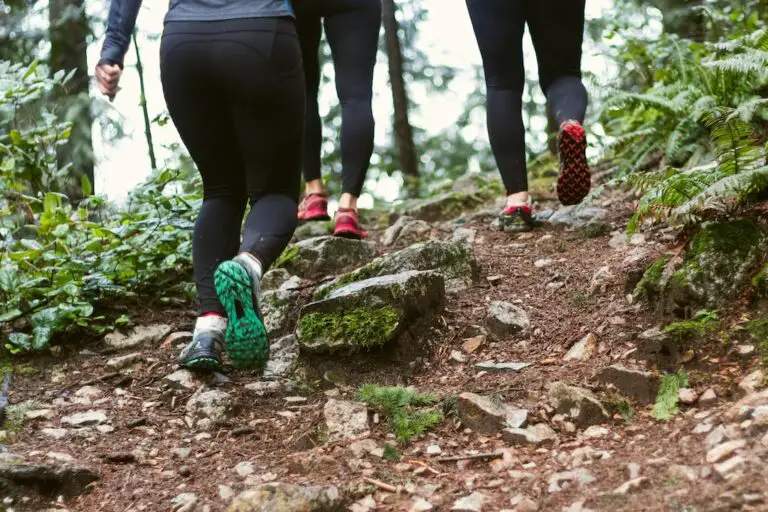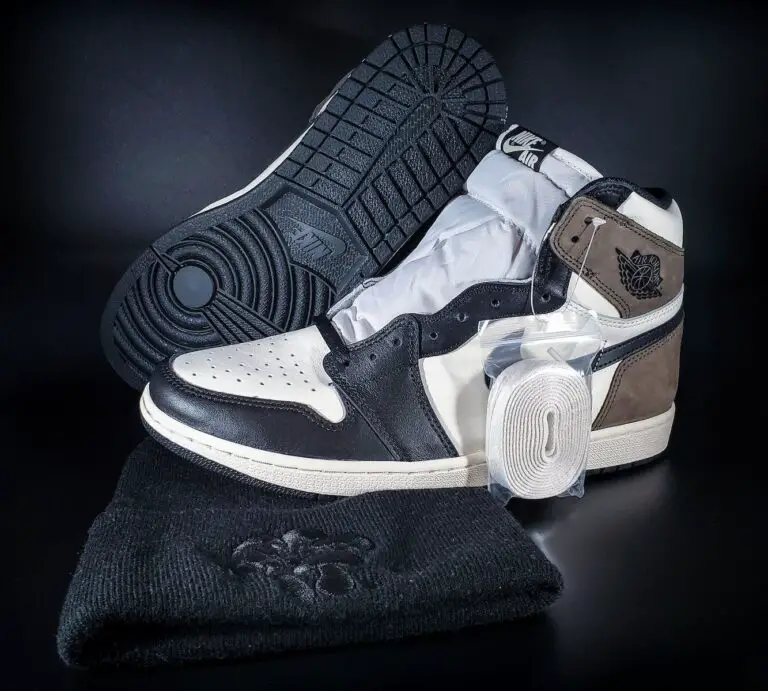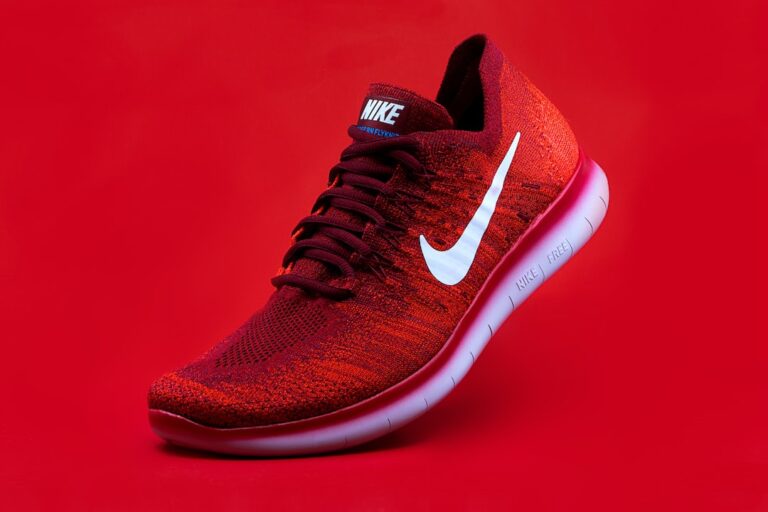Support our educational content for free when you purchase through links on our site. Learn more
What Is Considered Athletic Footwear? 12 Types You Need to Know 👟 (2025)
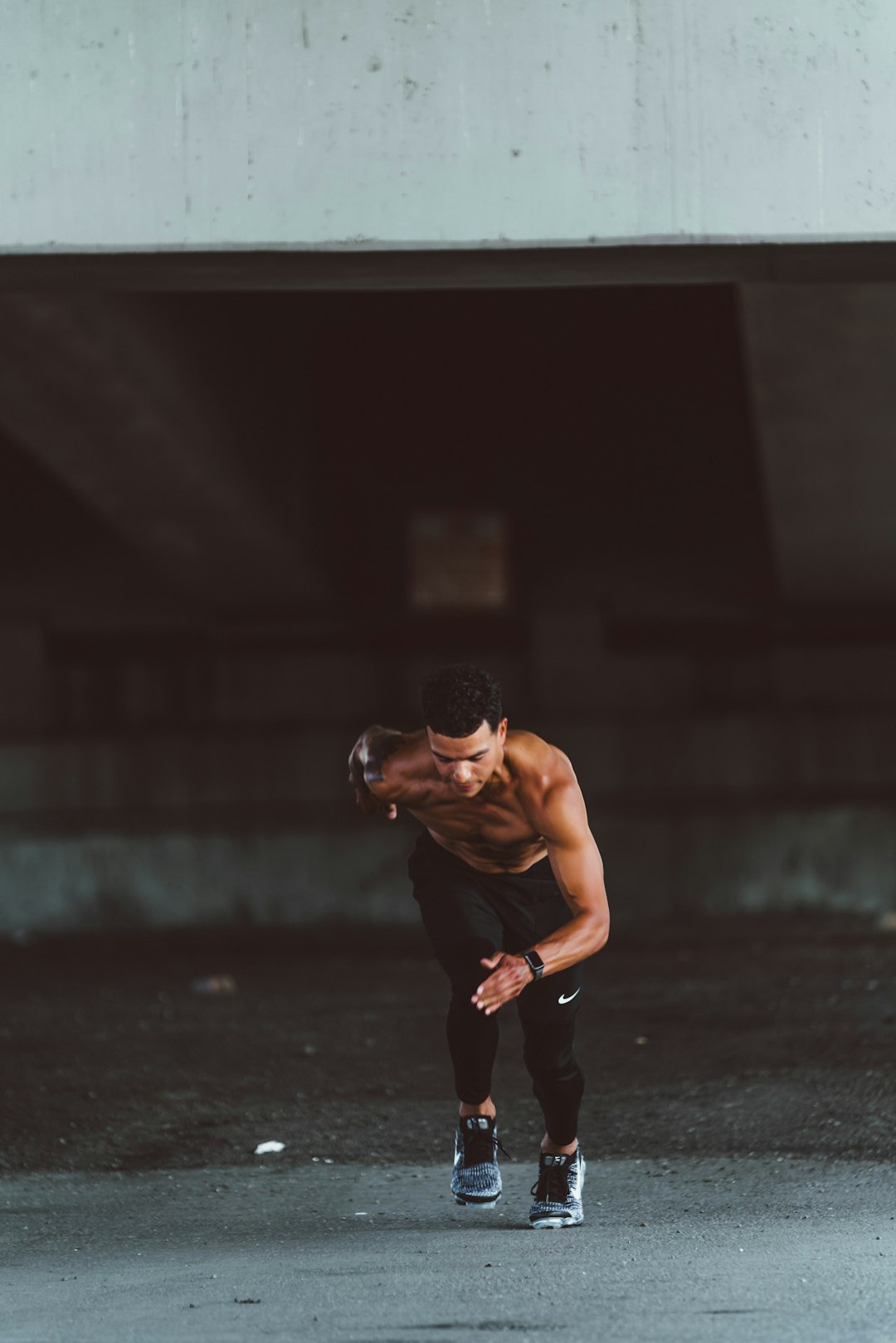
Have you ever wondered what truly makes a shoe “athletic”? Is it just any sneaker you throw on for the gym, or is there a secret sauce behind those high-performance kicks? Spoiler alert: not all sneakers are created equal! From the revolutionary cushioning in running shoes to the specialized cleats that grip the field, athletic footwear is a fascinating world of design, technology, and purpose. Stick with us as we unravel the 12 essential types of athletic shoes, their unique features, and how choosing the right pair can transform your game—and your comfort.
Here’s a fun fact to kick things off: the word “sneaker” originated because early rubber-soled shoes allowed wearers to sneak quietly. But today’s athletic shoes do so much more than just silence your steps—they protect, propel, and perform. Ready to discover which shoe fits your stride? Let’s lace up!
Key Takeaways
- Athletic footwear is defined by specialized design features like cushioning, stability, traction, and sport-specific support—not just by looking sporty.
- There are 12 main categories of athletic shoes, including running, walking, cross-training, court shoes, cleats, hiking boots, and more.
- Fit is crucial: even the best shoe won’t perform if it doesn’t fit your foot properly.
- Modern athletic shoes blend technology and style, with brands like Nike, Adidas, ASICS, and Brooks leading the way.
- Sustainable options are growing, letting you step lighter on the planet without sacrificing performance.
Ready to find your perfect pair? Check out our curated selections for Running Shoes, Cross Trainers, and Cleats to get started!
Table of Contents
- ⚡️ Quick Tips and Facts
- 👟 The Evolution of Athletic Footwear: A Stride Through History
- 🤔 What Exactly is Athletic Footwear? Defining Performance on Your Feet
- 🎯 The Core Purpose: Why Athletic Shoes Aren’t Just “Sneakers”
- 💡 Key Characteristics: What Makes a Shoe “Athletic”?
- 🔬 Anatomy of an Athletic Shoe: Beyond the Sole
- 👟 A Deep Dive into Athletic Footwear Categories: Finding Your Perfect Match
- 🏃♀️ Running Shoes: Pounding the Pavement with Precision
- 🚶♂️ Walking Shoes: Your Daily Stride, Elevated
- 🏋️ Cross-Training Shoes: The Versatile Gym Companion
- 🎾 Court Sports Shoes: Agility and Grip for the Win (Tennis, Basketball, Volleyball, Pickleball)
- ⚽ Cleated Footwear: Digging In for Field Domination (Soccer, Football, Baseball, Lacrosse, Rugby)
- ⛳ Golf Shoes: Stability and Traction on the Green
- ⛰️ Hiking and Trail Footwear: Conquering the Great Outdoors
- 🚴 Cycling Shoes: Power Transfer on Two Wheels
- 🤸♀️ Specialized Training Shoes: From Weightlifting to Dance
- 💧 Water Sports Shoes: Grip and Protection for Aquatic Adventures
- ❄️ Winter Sports Footwear: Traction and Warmth in the Cold
- 👣 Minimalist and Barefoot-Style Shoes: Less is More?
- 📏 Finding Your Perfect Fit: The Goldilocks Zone of Athletic Shoes
- 🧼 Care and Maintenance: Keeping Your Athletic Footwear Fresh and Functional
- 🌍 Sustainable Strides: Eco-Friendly Athletic Footwear Trends and Brands
- 🚫 Common Misconceptions: What Athletic Footwear Isn’t
- 🛒 Where to Buy: Navigating the Athletic Footwear Market
- 🎉 Conclusion: Stepping Up Your Game with the Right Athletic Footwear
- 🔗 Recommended Links: Dive Deeper!
- ❓ FAQ: Your Burning Questions About Athletic Footwear Answered
- 📚 Reference Links: Our Sources, Your Knowledge
⚡️ Quick Tips and Facts
Before we lace up and dive deep, here are some quick nuggets from the Shoe Brands™ stylists to get you sprinting in the right direction:
- Athletic footwear is not just about looking sporty; it’s engineered to support specific movements, reduce injury risk, and boost performance.
- If you’re rocking shoes for a sport more than twice a week, specialized footwear is a must.
- The difference between running shoes and walking shoes? It’s all in the sole design and cushioning—running shoes absorb more shock upfront, walking shoes focus on heel cushioning and toe-off support.
- Minimalist shoes are trendy but controversial; they mimic barefoot running but aren’t for everyone.
- Cleats aren’t just for soccer; football, baseball, lacrosse, and rugby all have their own specialized cleated shoes.
- Fit is king! Even the fanciest shoe won’t perform if it doesn’t fit your foot perfectly.
Want to know why your old sneakers might be sabotaging your workout? Stick around—we’ve got the full scoop coming up. Meanwhile, check out our related article on What Shoes Are Worth a Lot of Money? Discover 25 Gems! 💎 for some sneakerhead inspiration.
👟 The Evolution of Athletic Footwear: A Stride Through History
Athletic footwear has come a long way from the simple leather plimsolls of the 19th century. The journey from rudimentary soles to high-tech performance shoes is a fascinating blend of innovation, culture, and style.
The Early Days: From Plimsolls to Sneakers
- The term “sneaker” originated because the rubber soles allowed wearers to “sneak” quietly.
- In the early 1900s, brands like Converse introduced canvas and rubber shoes for basketball players.
- The 1970s running boom sparked the rise of specialized running shoes with cushioned midsoles and arch support.
Modern Innovations
- The 1980s saw Nike’s Air technology debut, revolutionizing shock absorption.
- Adidas introduced Boost foam, offering energy return and comfort.
- Today, brands like On Running and Hoka One One push boundaries with maximalist cushioning and carbon plates for speed.
Fun Fact:
Vietnam is now a global hub for athletic shoe manufacturing, with many top brands producing there due to skilled labor and cost efficiency (source).
🤔 What Exactly is Athletic Footwear? Defining Performance on Your Feet
Let’s clear the air: Athletic footwear isn’t just any shoe you wear to the gym or on the weekend. According to the Footwear Distributors and Retailers of America (FDRA), athletic footwear includes “tennis shoes, basketball shoes, gym shoes, training shoes and the like,” characterized by:
- Lightweight, flexible soles
- Padded tongues, collars, and footbeds
- Secure closures (laces, straps)
- Athletic outer sole tread for grip
- Toe bumpers and heel counters for protection
❌ Excluded are sandals, open-toe shoes, and slip-ons without secure closure.
So, your casual slip-ons or fashion sneakers? Not quite athletic footwear. But your Nike Air Zoom Pegasus or Adidas Ultraboost? Absolutely.
🎯 The Core Purpose: Why Athletic Shoes Aren’t Just “Sneakers”
Here’s the kicker: calling all athletic shoes “sneakers” is like calling every car a “sedan.” It’s a broad term that misses the specialized engineering behind each shoe.
- Injury prevention: Proper athletic shoes reduce stress on joints and muscles.
- Performance enhancement: Shoes designed for specific sports improve traction, stability, and energy return.
- Durability: Athletic footwear uses materials built to withstand repetitive impact and movement.
Our stylists have seen countless runners switch from generic sneakers to sport-specific shoes and instantly notice less fatigue and fewer injuries. It’s not just hype—it’s science.
💡 Key Characteristics: What Makes a Shoe “Athletic”?
Let’s break down the must-have features that separate athletic footwear from your everyday kicks:
| Feature | Purpose | Example Brands/Models |
|---|---|---|
| Cushioning | Shock absorption for impact protection | Nike Air Zoom, ASICS Gel-Kayano |
| Arch Support | Supports foot structure, prevents overpronation | Brooks Adrenaline GTS, New Balance 990 |
| Traction | Grip for various surfaces | Adidas Terrex (trail), Puma Court (tennis) |
| Flexibility | Allows natural foot movement | Vibram FiveFingers (minimalist), On Running |
| Secure Closure | Keeps foot locked in place | Laces, Velcro straps, BOA systems |
| Breathability | Moisture management to prevent overheating | Nike Flyknit, Under Armour HOVR |
| Durability | Materials that withstand wear and tear | Leather, reinforced mesh, TPU overlays |
These features are tailored differently depending on the sport or activity, which is why picking the right shoe is crucial.
🔬 Anatomy of an Athletic Shoe: Beyond the Sole
Ever wondered what’s under the hood of your favorite running shoe? Let’s dissect the anatomy:
- Upper: Usually mesh or knit for breathability, sometimes leather or synthetic for durability and support.
- Midsole: The heart of cushioning, often EVA foam or proprietary materials like Nike React or Adidas Boost.
- Outsole: Rubber or TPU with tread patterns designed for grip on specific surfaces.
- Heel Counter: Rigid support at the back of the shoe to stabilize the heel.
- Toe Box: Space for toes to splay naturally, varies by shoe type.
- Insole: Removable or fixed cushioning layer for comfort and sometimes orthotic support.
- Closure System: Laces, straps, or BOA dials to secure the foot.
Knowing these parts helps you appreciate why a $150 running shoe can outperform a $50 casual sneaker.
👟 A Deep Dive into Athletic Footwear Categories: Finding Your Perfect Match
Our Shoe Brands™ experts have rated and reviewed the most popular athletic shoe types to help you find your perfect fit. Let’s lace up!
1. 🏃♀️ Running Shoes: Pounding the Pavement with Precision
| Aspect | Rating (1-10) |
|---|---|
| Design | 9 |
| Cushioning | 10 |
| Stability | 8 |
| Breathability | 9 |
| Durability | 7 |
| Versatility | 6 |
Why Running Shoes Rock:
Designed for forward motion, running shoes excel at shock absorption and protecting the heel and forefoot. Brands like ASICS Gel-Kayano, Nike Air Zoom Pegasus, and Brooks Ghost are favorites for their blend of cushioning and support.
Pro Tip: Look for shoes with good arch support and a snug heel fit to prevent blisters and injuries.
Drawbacks: Running shoes are often less durable on rough terrain and not ideal for lateral movements.
👉 CHECK PRICE on:
2. 🚶♂️ Walking Shoes: Your Daily Stride, Elevated
| Aspect | Rating (1-10) |
|---|---|
| Design | 8 |
| Cushioning | 8 |
| Stability | 9 |
| Flexibility | 7 |
| Durability | 8 |
| Comfort | 10 |
Walking shoes focus on heel and ball cushioning with a slightly rounded sole to facilitate smooth toe-off. Brands like New Balance 928 and Skechers Go Walk dominate this category.
Why We Love Them: Perfect for everyday wear, these shoes reduce fatigue and provide excellent arch support.
Watch Out: They’re not designed for running or high-impact sports.
👉 Shop Walking Shoes on:
3. 🏋️ Cross-Training Shoes: The Versatile Gym Companion
| Aspect | Rating (1-10) |
|---|---|
| Design | 8 |
| Stability | 9 |
| Flexibility | 8 |
| Cushioning | 7 |
| Durability | 8 |
| Versatility | 10 |
Cross trainers like the Nike Metcon and Reebok Nano are built for multi-directional movement, combining flexibility for running with lateral support for weightlifting or aerobics.
Best For: Gym rats who switch between cardio, lifting, and classes.
Limitations: Not specialized enough for serious runners or court athletes.
👉 CHECK PRICE on:
4. 🎾 Court Sports Shoes: Agility and Grip for the Win (Tennis, Basketball, Volleyball, Pickleball)
| Aspect | Rating (1-10) |
|---|---|
| Design | 9 |
| Lateral Support | 10 |
| Traction | 9 |
| Cushioning | 8 |
| Durability | 8 |
Court shoes are all about side-to-side support and grip. For tennis, look at NikeCourt Air Zoom Vapor; for basketball, Air Jordan 1 or Under Armour Curry are iconic.
Why They Matter: Quick cuts and jumps require stability and traction to avoid injuries.
Heads Up: Court shoes are less cushioned for forward running than running shoes.
👉 Shop Court Shoes on:
5. ⚽ Cleated Footwear: Digging In for Field Domination (Soccer, Football, Baseball, Lacrosse, Rugby)
| Sport | Key Features | Popular Brands/Models |
|---|---|---|
| Soccer | Lightweight, no toe spike, close fit | Adidas Predator, Nike Mercurial |
| Football | Stiff sole, center toe cleat varies by position | Nike Alpha Menace, Under Armour Highlight |
| Baseball | Longer, narrower, sometimes metal toe cleat | New Balance 4040, Nike Vapor Edge |
| Lacrosse | High tops, molded cleats on edges | Under Armour Command, Nike Force |
| Rugby | Durable, reinforced toe and sole | Canterbury Phoenix, Adidas Kakari |
Cleats provide traction on grass or turf and are sport-specific to accommodate movements and positions.
Pro Tip: Always choose cleats designed for your sport to avoid injury and maximize performance.
👉 CHECK PRICE on:
- Adidas Predator Soccer Cleats on Amazon | Nike Alpha Menace Football Cleats on Amazon | New Balance 4040 Baseball Cleats on Amazon
6. ⛳ Golf Shoes: Stability and Traction on the Green
| Aspect | Rating (1-10) |
|---|---|
| Stability | 10 |
| Traction | 9 |
| Comfort | 8 |
| Waterproofing | 7 |
| Style | 8 |
Golf shoes like FootJoy Pro SL and Nike Air Zoom Infinity Tour feature short cleats or spikeless soles for grip during swings and walking.
Why It Matters: Stability during your swing can shave strokes off your game.
Note: Waterproof options are great for wet courses.
👉 Shop Golf Shoes on:
7. ⛰️ Hiking and Trail Footwear: Conquering the Great Outdoors
| Type | Best For | Popular Models |
|---|---|---|
| Lightweight | Well-maintained trails | Merrell Moab 3, Salomon X Ultra |
| Midweight | Rocky or uneven terrain | Keen Targhee III, Columbia Newton Ridge |
| Heavyweight | Backpacking, snow, ice | Vasque Breeze III, La Sportiva Nucleo |
Hiking boots provide grip, ankle support, and weather resistance. Trail running shoes like Salomon Speedcross offer lighter options with aggressive tread.
Shoe Brands™ Tip: Pick boots based on your terrain and pack weight to avoid foot fatigue.
👉 CHECK PRICE on:
8. 🚴 Cycling Shoes: Power Transfer on Two Wheels
| Type | Features | Popular Brands/Models |
|---|---|---|
| Mountain/Recreational | Flexible sole, recessed cleats for walking | Shimano SH-MT5, Giro Terraduro |
| Performance/Racing | Stiff sole, external cleats for energy transfer | Specialized S-Works, Fizik R1 |
| Indoor Cycling | Hybrid stiffness, comfort | Peloton Cycling Shoes, Shimano IC5 |
Cycling shoes maximize pedaling efficiency by locking feet to pedals with cleats.
Heads Up: Make sure cleats are compatible with your pedals!
👉 Shop Cycling Shoes on:
9. 🤸♀️ Specialized Training Shoes: From Weightlifting to Dance
| Activity | Shoe Features | Recommended Brands/Models |
|---|---|---|
| Weightlifting | Flat, stable sole, minimal cushioning | Nike Romaleos, Adidas Adipower |
| Dance/Aerobics | Flexible sole, lightweight | Bloch Dance Sneakers, Capezio Jazz Sneakers |
Specialized shoes cater to unique movement patterns, offering stability for lifts or flexibility for dance.
Shoe Brands™ Insight: Using the wrong shoe for these activities can hinder performance and increase injury risk.
10. 💧 Water Sports Shoes: Grip and Protection for Aquatic Adventures
Water shoes feature quick-drying materials, drainage holes, and soles designed for slippery surfaces. Brands like Speedo Surfwalker and Merrell All Out Blaze Sieve are favorites.
Why You Need Them: Protect feet from rocks, coral, and slippery docks.
11. ❄️ Winter Sports Footwear: Traction and Warmth in the Cold
Winter boots and snowboarding shoes focus on insulation, waterproofing, and aggressive tread. Look for brands like Sorel Caribou or Burton Moto.
12. 👣 Minimalist and Barefoot-Style Shoes: Less is More?
| Aspect | Rating (1-10) |
|---|---|
| Design | 7 |
| Cushioning | 3 |
| Flexibility | 10 |
| Natural Feel | 10 |
Minimalist shoes like Vibram FiveFingers and Merrell Vapor Glove aim to mimic barefoot running. They offer flexibility and ground feel but may increase injury risk if not transitioned into carefully.
Expert Caution: Studies show heavier runners or those new to minimalist shoes may experience more pain or injury (source).
📏 Finding Your Perfect Fit: The Goldilocks Zone of Athletic Shoes
Fit is the make-or-break factor in athletic footwear. Here’s how to find your Goldilocks fit:
- Measure your feet at the end of the day when they’re largest.
- Leave about a thumb’s width of space in the toe box.
- Ensure snugness around the midfoot and heel to prevent slipping.
- Try shoes on with the socks you plan to wear during activity.
- Walk, jog, and pivot in-store if possible.
Our stylists swear by the “heel lock lacing technique” for extra security in running and court shoes.
🧼 Care and Maintenance: Keeping Your Athletic Footwear Fresh and Functional
To extend the life of your kicks:
- Rotate shoes to allow cushioning to decompress.
- Air out shoes after use to prevent odor and bacteria.
- Clean regularly with mild soap and water; avoid harsh detergents.
- Replace insoles if worn out for continued support.
- Avoid machine washing unless manufacturer specifies.
Pro tip: Use sneaker shields or toe protectors to maintain shape.
🌍 Sustainable Strides: Eco-Friendly Athletic Footwear Trends and Brands
Sustainability is stepping up in athletic footwear! Brands like Allbirds, Adidas (Parley line), and Veja use recycled materials and eco-friendly processes.
- Shoes made from recycled ocean plastics and plant-based leathers are gaining traction.
- Some brands offer take-back programs to recycle old shoes.
Choosing sustainable athletic shoes helps reduce your carbon footprint without sacrificing performance or style.
🚫 Common Misconceptions: What Athletic Footwear Isn’t
- ❌ Athletic shoes are not just any sneakers or casual shoes.
- ❌ High price doesn’t always mean better performance—fit and function matter more.
- ❌ Minimalist shoes are not universally better; they require careful transition.
- ❌ Athletic footwear isn’t one-size-fits-all; sport-specific shoes are designed for unique demands.
🛒 Where to Buy: Navigating the Athletic Footwear Market
From flagship brand stores to online marketplaces, here’s where to shop smart:
- Brand Official Websites: Best for latest models and exclusive releases (Nike, Adidas, ASICS).
- Amazon: Wide selection, user reviews, competitive shipping.
- Specialty Retailers: REI for hiking, Dick’s Sporting Goods for multi-sport options.
- Outlet Stores: Great for past-season deals but check return policies.
Our Shoe Brands™ team recommends trying shoes in-store for fit, then hunting online for the best deals.
🎉 Conclusion: Stepping Up Your Game with the Right Athletic Footwear
Wow, what a journey! From the humble beginnings of rubber-soled plimsolls to the cutting-edge tech in today’s Nike Air Zoom Pegasus or Adidas Ultraboost, athletic footwear has truly evolved to become a cornerstone of performance and style. We’ve seen how specialized shoes—from running and walking to cleats and minimalist styles—are engineered with unique features to support your every move, protect you from injury, and elevate your game.
Remember our quick tip: fit is king. No matter how fancy the shoe, if it doesn’t fit your foot like a glove, you’re setting yourself up for discomfort or worse. And while minimalist shoes offer a barefoot feel, they’re not a magic bullet and require careful transition.
At Shoe Brands™, we confidently recommend investing in sport-specific athletic footwear that matches your activity. Whether you’re pounding pavement, hitting the court, or conquering trails, the right shoe will make all the difference. And don’t forget to care for your kicks properly to keep them fresh and functional.
So, next time you’re tempted to grab those casual sneakers for your workout, think again. Your feet—and your performance—will thank you!
🔗 Recommended Links: Dive Deeper!
Ready to shop or learn more? Check out these top picks and resources:
- Running Shoes:
- Walking Shoes:
- Cross Trainers:
- Court Shoes:
- Cleats:
- Golf Shoes:
- Hiking Shoes:
- Cycling Shoes:
Books to Step Up Your Knowledge:
- “Sneaker Wars: The Enemy Brothers Who Founded Adidas and Puma and the Family Feud That Forever Changed the Business of Sport” by Barbara Smit
- “Out of the Box: The Rise of Sneaker Culture” by Elizabeth Semmelhack
❓ FAQ: Your Burning Questions About Athletic Footwear Answered
What features make a shoe athletic footwear?
Athletic footwear is defined by a combination of lightweight construction, flexible yet supportive soles, secure closure systems, and sport-specific design elements like cushioning, traction, and stability. These features are engineered to enhance performance and reduce injury risk during physical activity. According to the FDRA, athletic shoes typically include padded collars, toe bumpers, and specialized tread patterns, distinguishing them from casual or fashion footwear.
Are all running shoes considered athletic footwear?
✅ Yes, running shoes fall under the umbrella of athletic footwear because they are specifically designed for the sport of running, featuring shock-absorbing midsoles, heel and forefoot protection, and breathable uppers. However, not all shoes marketed as “running shoes” meet these criteria, so it’s important to choose models from reputable brands like ASICS, Nike, or Brooks that adhere to performance standards.
How has athletic footwear evolved over the years in terms of style and technology?
Athletic footwear has transformed dramatically—from simple rubber-soled plimsolls to high-tech shoes with air cushioning, energy-return foams, carbon fiber plates, and knit uppers. Brands like Nike revolutionized the market with Air technology in the 1980s, while Adidas introduced Boost foam for enhanced comfort and responsiveness. Today’s shoes blend performance, sustainability, and style, reflecting advances in materials science and consumer demand.
What are the key differences between athletic footwear and fashion footwear?
Athletic footwear prioritizes functionality, support, and durability tailored to specific activities, whereas fashion footwear focuses primarily on aesthetics. Athletic shoes feature technical elements like shock absorption, traction, and secure fit mechanisms, which are often absent or minimal in fashion sneakers. While some fashion shoes mimic athletic styles, they typically lack the performance features necessary for sports or exercise.
How do I know when to replace my athletic shoes?
Signs you need new athletic shoes include worn-out soles, reduced cushioning, visible damage, or discomfort during use. Most running shoes last between 300-500 miles, but this varies by activity and foot strike. Regularly rotating shoes and monitoring wear patterns can help extend their life and prevent injury.
Can I use the same athletic shoes for multiple sports?
While cross-training shoes offer versatility, most athletic footwear is designed for specific movements and surfaces. Using running shoes for court sports or cleats for trail running can increase injury risk and reduce performance. It’s best to invest in sport-specific shoes if you engage regularly in multiple activities.
📚 Reference Links: Our Sources, Your Knowledge
- ATHLETIC SHOE Definition & Meaning | Dictionary.com
- Footwear Distributors and Retailers of America (FDRA) Footwear Definitions
- WebMD: Different Types of Athletic Shoes
- Nike Official Website
- Adidas Official Website
- ASICS Official Website
- Brooks Running Official Website
- New Balance Official Website
Ready to step into your best athletic shoes yet? We’re here to help you find the perfect pair that fits your style, sport, and stride! 👟✨
